SLAC
Latest
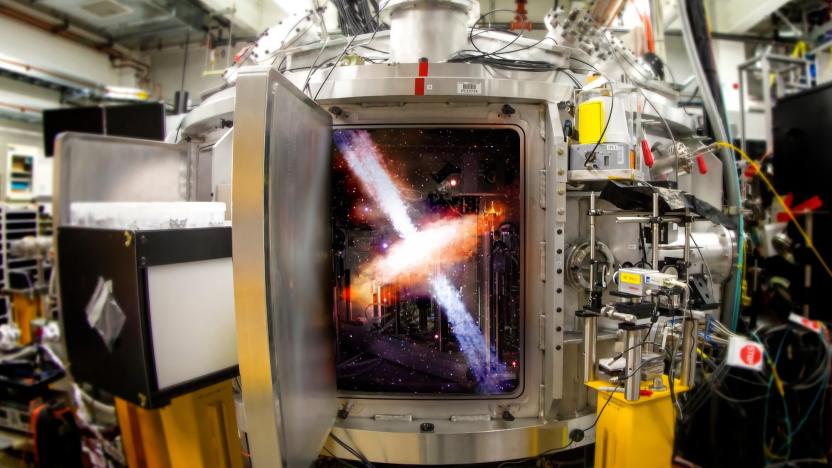
Stanford’s upgraded X-ray laser is up and running
The newly upgraded particle accelerator at the DoE’s Stanford Linear Accelerator Center (SLAC) has produced its first X-rays. The Linac Coherent Light Source (LCLS) upgrade, called LCLS-II, can emit up to a million X-ray pulses per second (8,000 times more than the original) and an almost continuous beam 10,000 times brighter than its predecessor.

Scientists observe elusive missing step in photosynthesis’ final stage
Researchers at the SLAC National Accelerator Laboratory and Lawrence Berkeley National Laboratory have shed new light on the final step of photosynthesis. They observed in atomic detail how Photosystem II, a protein complex found in plants, undergoes a transformation that leads to the loss of an extra oxygen atom. Scientists believe the discoveries will help provide a roadmap for optimizing clean energy sources.

A new electrolyte mixture may prevent EV batteries from catching fire
Your next EV or phone might be less likely to catch fire thanks to extra-salty batteries.

SLAC's newest laser works best when it's colder than outer space
It took nearly a decade but the new super-powerful, super-chilled coherent laser system at Stanford's SLAC is ready to unlock the quantum realm's secrets with massively powerful X-ray blasts.

Stanford researchers manage to put a particle accelerator on a silicon chip
In scientific pursuits, like the search for dark matter, researchers sometimes use high-power particle accelerators. But these giant machines are extremely expensive and only a handful of them exist, so teams must travel to places like the SLAC National Accelerator Laboratory in Menlo Park, California, where Stanford University operates at two-mile-long particle accelerator. This may change, though. Researchers believe they have developed an alternative: a laser-driven particle accelerator that fits on a silicon chip.
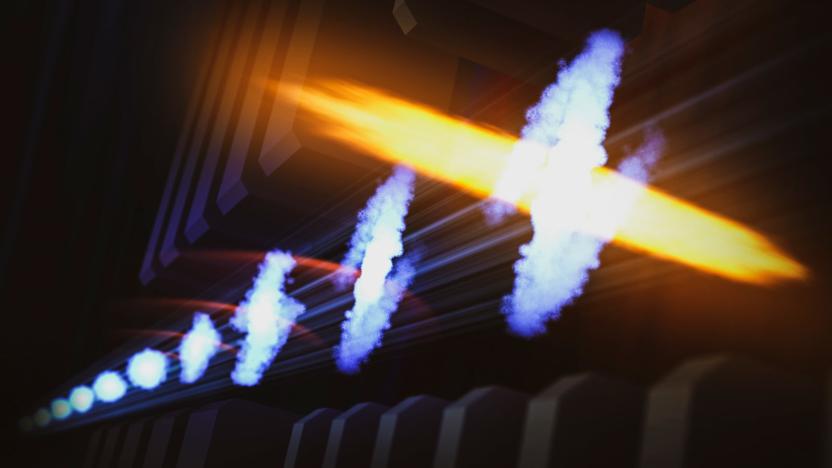
X-ray lasers can spot elusive electron motion
Scientists can track the movements of an atom's nucleus relatively easily, but electrons have proven elusive -- they move so fast that they tend to be reduced to blurs. Now, however, those movements could be crystal clear. Researchers at the SLAC National Accelerator Lab have developed a technique, X-ray laser-enhanced attosecond pulse generation (XLEAP), that can observe even the fastest motions of electrons. The laser pulses at just 280 attoseconds, or billionths of a billionth of a second, and can create snapshots of electrons to track their progress. The trick was to modify the laser in a way that squeezed electrons into tighter groups, making for shorter X-ray bursts.
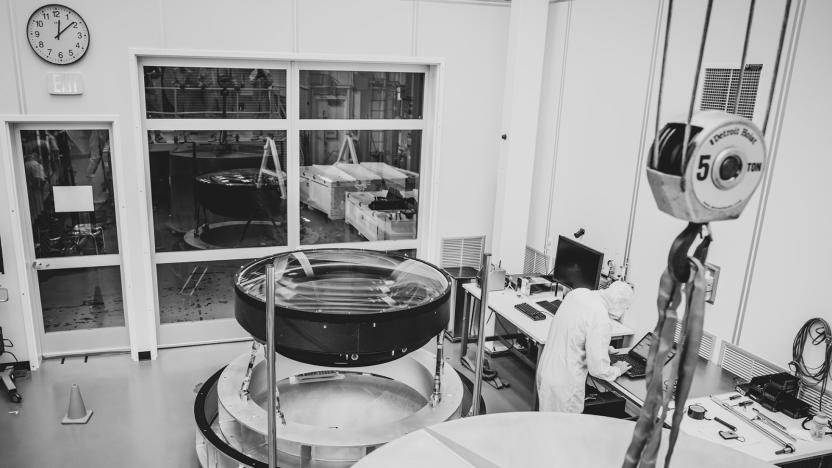
Moving the largest high-performance lens ever built
Not all the most interesting telescopes need to live in space. The Large Synoptic Survey Telescope (LSST) will sit on top of a mountain in Chile some 8,800 feet up and snap 3.2-gigapixel (3,200-megapixel) images of the sky every 20 seconds. All told, it will be able to snap digital images of the entire southern sky every few nights. By taking relatively long 15-second exposures, scientists will be able to study the early universe, track dimly-lit asteroids and better understand dark energy.
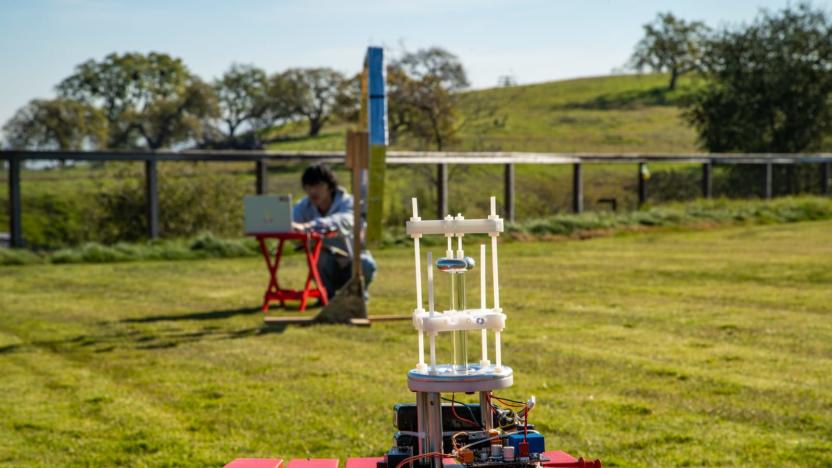
This four-inch antenna could let you text from deep underground
There's a reason that scuba divers use sign language and that caves and tunnels create radio dead zones. The laws of physics prevent radio signals from penetrating materials like water, soil and stone, and that's been a frustrating limitation of modern wireless communication. Now, the Department of Energy's SLAC National Accelerator Laboratory might have a solution: a four-inch-tall, pocket-sized antenna that emits very low frequency (VLF) radiation.

Stanford's new lab could make particle accelerators 1,000 times smaller
Particle accelerators have proven vital to understanding subatomic physics, but current technology tends to make them... rather large. And Stanford is determined to address that. SLAC has started assembling a new location, FACET-II (Facility for Advanced Accelerator Experimental Tests), that could lead to accelerators 100 to 1,000 times smaller than you see today. The facility will produce ultra-high quality electron beams that should help develop new, more size- and cost-effective plasma acceleration techniques.

Physicists keep striking out in the search for dark matter
Space may be the final frontier, but we've barely begun to explore its underlying mechanics. For as much as humanity has discovered since we first looked to the heavens, we've only seen about five percent of the total matter in the universe. The other 95 percent -- the so-called "dark matter" -- well, we can't even figure out how to see yet. But that doesn't mean researchers from around the world aren't devising ways to do so.
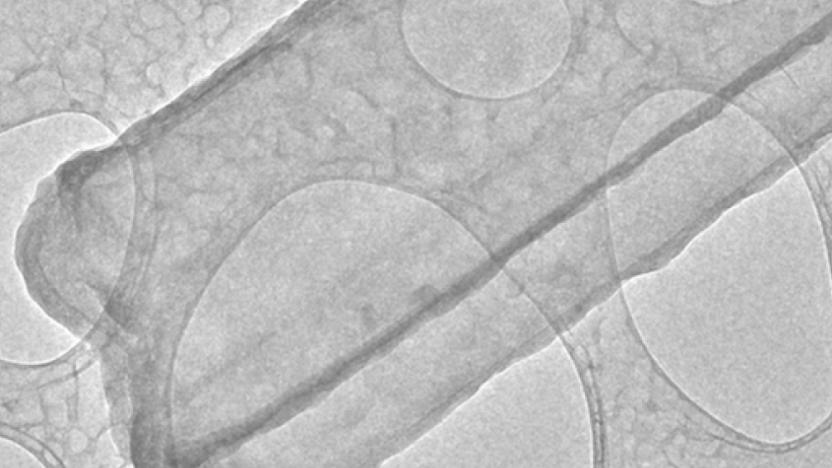
Researchers look deeply within batteries to see why they explode
High-energy batteries, like the ones in your laptop and smartphone, can fail, which can cause them to overheat and even catch fire. A team of researchers used cryo-electron microscopy (cryo-EM) , a technique that won the 2017 Nobel Prize in chemistry, to capture high-resolution, atomic-level images finger-like growths in these devices called dendrites. The new images will give scientists a better idea of what causes high-energy batteries to overheat, which could lead to safer devices for all of us.

Astronomers use AI to reduce analysis time from months to seconds
Gravitational lensing is when the image of a distant object in space -- like a galaxy, for example -- is distorted and multiplied by the gravity of a massive object, such as a galaxy cluster, lying in front of the smaller, faraway object. It's a useful phenomenon that has helped scientists discover exoplanets, understand galaxy evolution, spot a super bright galaxy, detect black holes and prove Einstein right. But analyzing images affected by gravitational lensing takes a really long time, requiring researchers to compare real images with simulated ones. Just one lensing effect can take weeks or months to analyze.

Optical laser uses shockwaves to peer inside distant planets
Scientists at SLAC's National Accelerator Laboratory are able to peer even further into space thanks to an improved optical laser. The laser uses shockwaves to create high pressure conditions in materials, and the material's response is then captured by an ultra-bright X-ray laser, revealing what's going on inside planets and meteors. Upgrades to the optical laser means it's now three times more powerful, with the equivalent power of 17 Teslas discharging their 100 kilowatt-hour batteries in a single second.
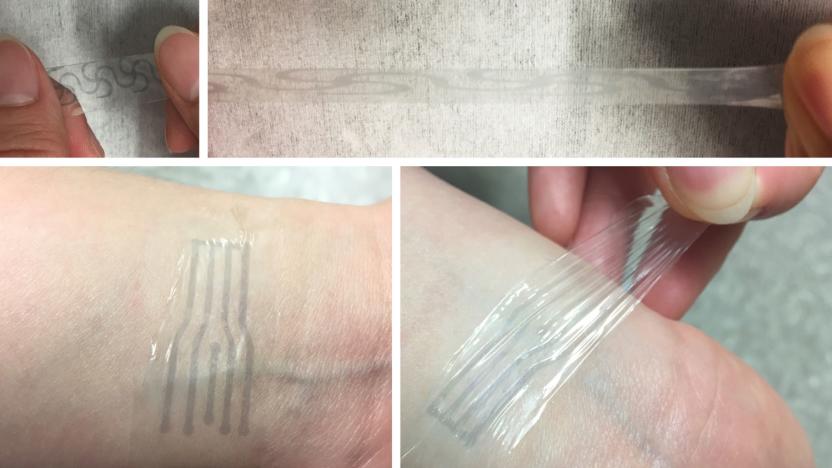
Scientists make stretchy electronics using a soup ingredient
For smart clothing or skin-worn devices to improve, first we need electronics that won't snap like a twig when you move. Using a soup thickener, of all things, scientists from Stanford's Bao Lab created a flexible electrode with "uncompromised electrical performance and high stretchability," said lab director Zhenan Bao. The material could one day be used in better brain-monitoring electronics and smart clothing embedded with heart sensors, LEDs and other tech.

ICYMI: The balloon bot that can actually stand upright
try{document.getElementById("aol-cms-player-1").style.display="none";}catch(e){}Today on In Case You Missed It: A scientist at UCLA's Robotics & Mechanisms Laboratory is experimenting with a way to get around the fact that robots have a difficult time maintaining a high center of gravity, aka they always fall down; so he's built something that looks like a balloon on stick insect legs. It's still very much a prototype but perhaps the idea will remain in future walking bots. Meanwhile, scientists at SLAC came up with a way to spot photosynthesis at room temperature, using an X-ray laser. Previous tests had always relied on freezing leaves to track it. If you're getting your projects in order for the coming weekend, we recommend the DIY fire tornado. If you're looking for the Rubix Cube solving bot, that's here. As always, please share any interesting tech or science videos you find by using the #ICYMI hashtag on Twitter for @mskerryd.

X-ray laser spots photosynthesis in real-life conditions
Humanity has known about the life-giving photosynthesis process for a long time, but studying it in real-world conditions has often been impractical. You've typically had to freeze samples to get a good look, which isn't exactly natural. However, the SLAC National Accelerator Laboratory just managed a breakthrough: it used its x-ray laser to capture detailed snapshots of photosynthesis at room temperature. The trick was to place protein complex samples in a solution, put that on a conveyor belt, light it up with a green laser (to start the water-splitting reaction) and capture images using x-ray pulses. As those pulses are extremely fast -- just 40 femtoseconds long -- you can collect crystallization and spectroscopy data before the sample meets its untimely end.

ICYMI: Treat all your wine right with a $1,500 fridge
try{document.getElementById("aol-cms-player-1").style.display="none";}catch(e){}Today on In Case You Missed It: A wine fridge called Plum can scan your wine bottles, seals so they stay fresh and then calibrates the temperature inside for maximum deliciousness of pour for every glass. Downside? It's $1,500 so you could take a vacation to wine country instead. Meanwhile, Harvard scientists announced a 3D-printed heart on a chip that has integrated sensors, so it can be used to test medications, which should rapidly accelerate medical studies. The most detailed Milky Way Galaxy yet is here. The particle accelerator on a chip talk at the SLAC lab is here and the Singapore driverless bus news is here. For drones attempting a lightbulb change, go here. As always, please share any interesting tech or science videos you find by using the #ICYMI hashtag on Twitter for @mskerryd.

Scientists catch a classic quantum experiment on camera
If you know a bit about quantum physics, you've likely heard of the Schrödinger's Cat concept used to explain superpositions: a cat in a box with a poison flask is at once alive and dead until you look inside. Researchers have produced this oddball state in the lab before, but they're now using it to create the most detailed X-ray movies of molecules they've seen so far. A team at the SLAC National Accelerator Laboratory first blasted an iodine molecule with an optical laser, splitting the molecule into simultaneous excited and relaxed states. When the scientists hit the molecule with X-rays afterward, the light scattering off of both states created an X-ray hologram showing the excited state. After that, the SLAC group only had to capture enough of these holograms to create a movie.

Postage stamp-sized device can disinfect water in minutes
In many parts of the world, people have to boil water or leave it for long periods under the sun to make sure it's clean enough to drink. Problem is, the former consumes fuel they can use for cooking or heating, while the latter takes too much time. A tiny device that's developed by Stanford University and SLAC National Laboratory could change that. While it's only half the size of a postage stamp, it can harness the the power of the sun to kill 99.99 percent of germs in as fast as 20 minutes. You simply have to drop it into the container of water you want to cleanse and leave it outside for a bit.

ICYMI: Smart coats, robot whiskers and vaporizing lasers
Today on In Case You Missed It: Google and Levi's team up to make a smart Canadian Tuxedo jacket, the University of Bristol teaches a whiskered robot to react to stimuli and Stanford's Linear Accelerator fries water droplets with an X-ray laser, because science!









